So you are thinking about starting an indoor herb garden, but have you picked the best soil for indoor herbs yet? Soil is the key to a successful garden. You can’t expect the best flavors and yields from an edible garden if you plant it in poor-quality soil.
Garden soil is not a good choice for growing herbs indoors because it is heavy, & thus can compact roots, & can introduce pests & diseases. Choose a packaged potting mix or potting soil from a reputable horticultural company, such as Miracle-Gro or Burpee, to grow indoor herbs.
The composition of the soil, what kind of nutrients it offers, and its pH are all important factors when deciding upon the best soil mix for your indoor herb garden. Continue reading to learn how to start your herbs with the best possible soil so you can enjoy the best flavors and yield.
Oh, and if you’re growing tomatoes, you should check out our complete article on the best soil for tomatoes.
Best Soil For Indoor Herbs
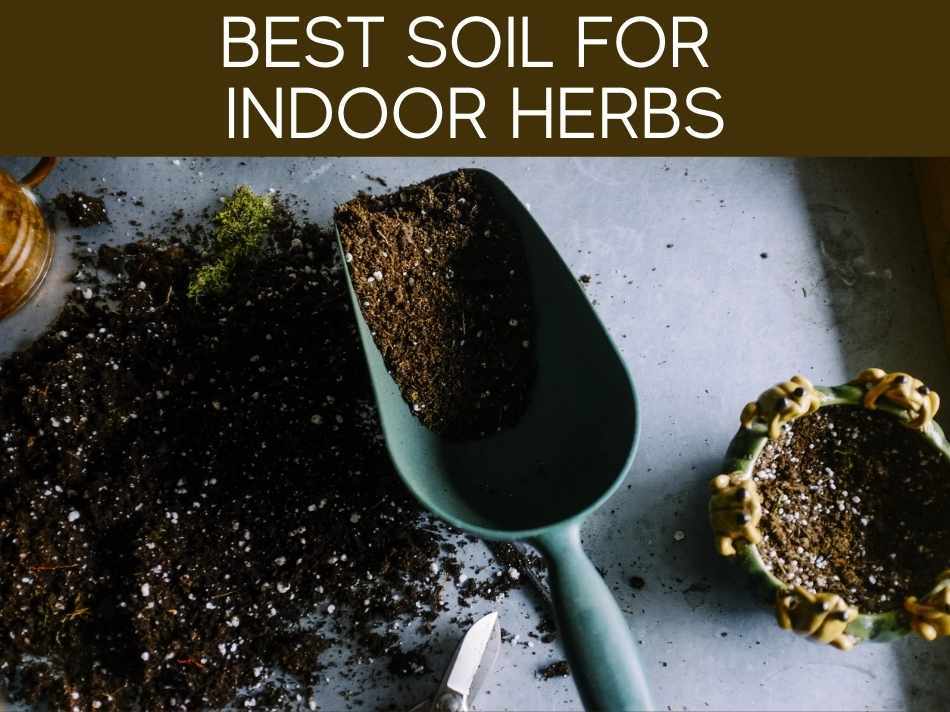
Herb gardening is the best way to include some green in your indoor environment while also adding versatility to your cooking.
Thyme, rosemary, basil, sage, chives, and tarragon will easily grow indoors as long as you give them enough light and a good growing medium.
You can even grow them all winter long to maintain a fresh supply of herbs in your kitchen even when the weather is unsuitable for growing outdoors.
Thankfully, herbs aren’t very demanding when it comes to nutrients.
In fact, if you give them a lot of nutrients, their yield might increase, but the flavors will fall.
Use well-drained soil that is not too rich in nutrients for growing herbs.
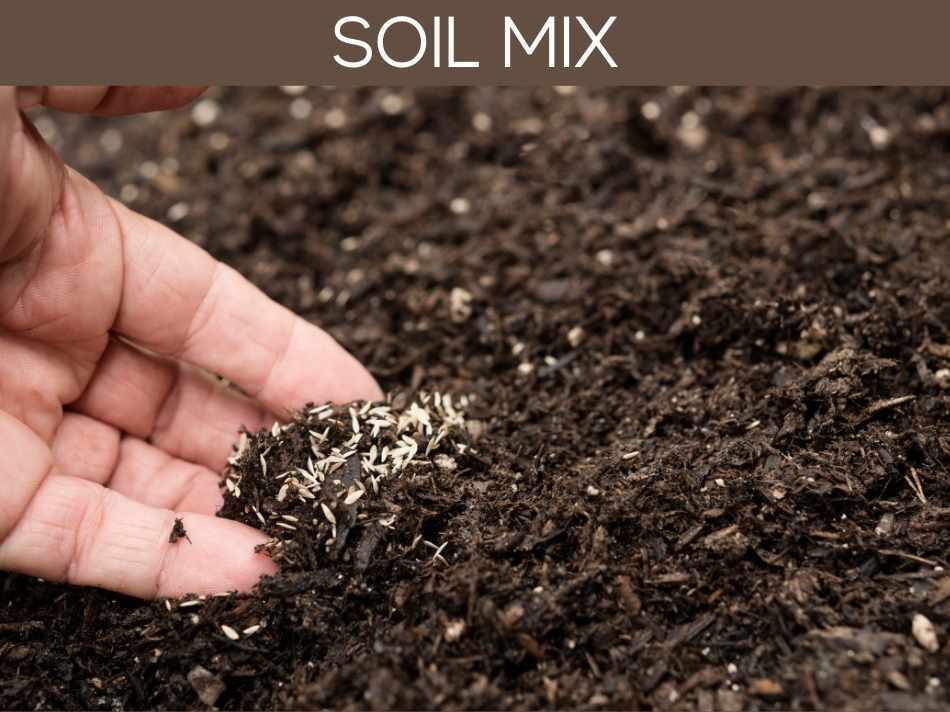
The soil mix should contain a moderate amount of organic matter and have a pH between 6.0 and 7.0.
If you need to lower your soil pH, check our our complete how-to instructions.
If you use a packaged potting soil, make sure it complies with the properties mentioned above before filling the herb planter or container with it.
Before filling it in the containers, take a wide pan to moisten the soil with water. Mix it evenly with water until it feels like a wrung-out sponge.
Fill the moistened soil into 6-inch deep containers with drainage holes at the bottom, leaving about a quarter of an inch space from the rim.
Most herb seeds shouldn’t be planted more than an inch deep in the soil.
Alternatively, you can simply sprinkle them over the soil and add a thin layer of soil on top.
Place the containers at a warm spot and keep the soil evenly moist for germination.
Find out what the little white balls in soil are.
What Kind Of Soil To Use For Indoor Herb Garden?
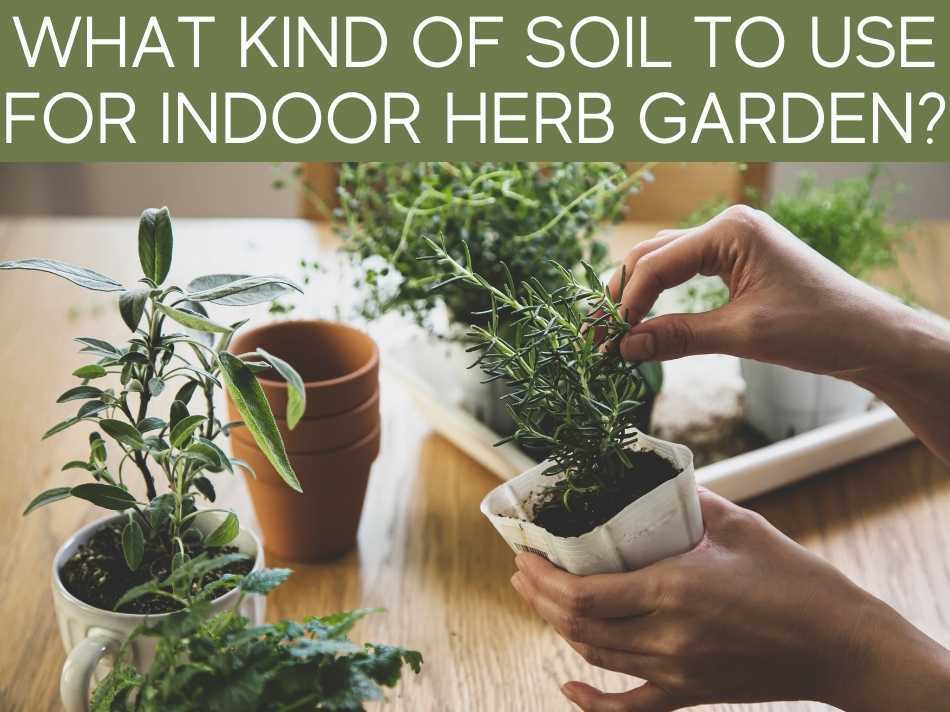
The growing medium is where plants receive nutrients, water, and air from.
It also supports the plants by anchoring the roots and helping them stand upright.
Unless you have the perfect soil, you can’t expect your herb garden to grow to its fullest potential.
There are numerous types of potting soil you can use for your herb garden.
Different companies have their own patent recipes for the potting mix.
As long as they comply with the following properties, you can use them for filling your herb planters:
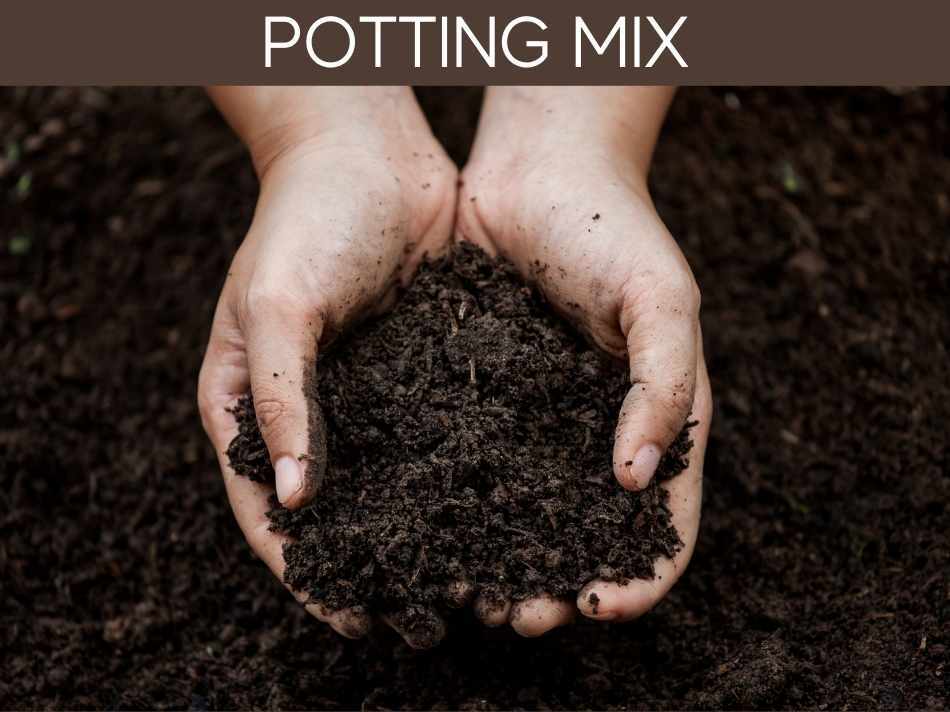
- Lightweight to allow drainage and aeration.
- Retains moisture for the root zone.
- Include material that retains nutrients for absorption by the roots.
- Drains easily, without causing waterlogging.
- Doesn’t compact upon drying.
- Sterile.
- Weed-free
Typically, different materials are added together to create a custom soil mix, ideal for growing herbs.
Commercial potting mixes are often a ‘soilless’ mix of different growing mediums, such as pine bark, peat moss, coconut coir, perlite, and vermiculite.
Different soil mixes will not necessarily have the same set of ingredients or are blended in the same ratio.
Also, depending on the type of plants and whether they’re grown indoors or outdoors, the ratio of ingredients is slightly adjusted to achieve the preferred properties.
Peat moss helps with moisture retention, while perlite makes the mixture light, airy, and improves drainage.
Coconut coir resists compaction while promoting the growth of beneficial bacteria at the root zone and providing essential nutrients to the plants, including potassium, iron, and copper.
Find out if you soil might be hydrophobic (and how to fix it).
Indoor Plant Soil Cover
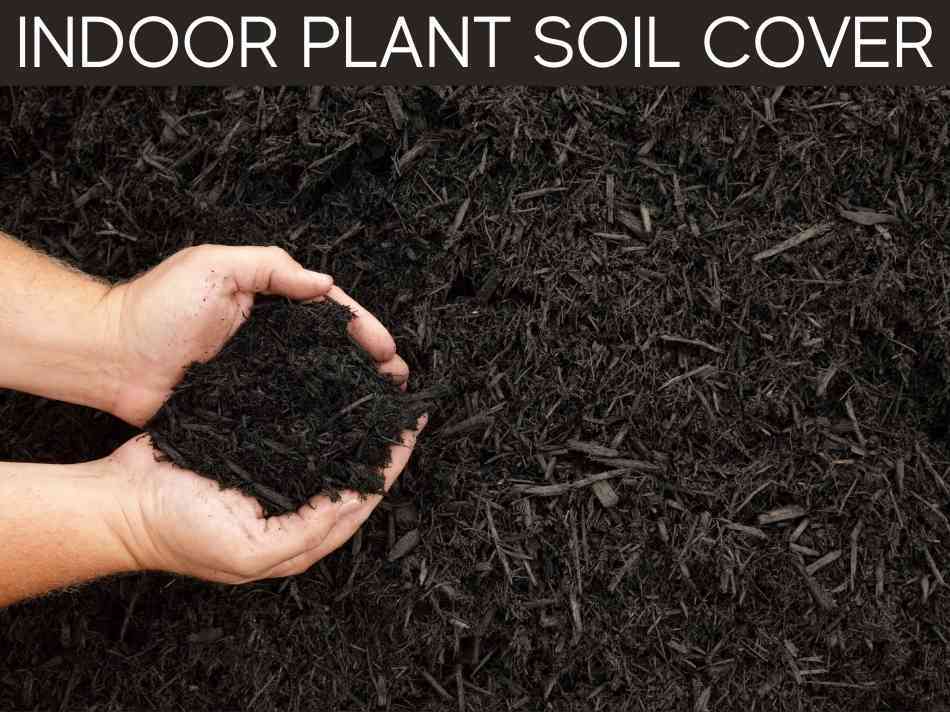
Soil cover offers several benefits for your indoor plants.
It keeps your herb garden free of pests and parasites, reduces the chances of diseases, and improves drainage.
Furthermore, acting as a blanket cover, it also helps regulate the soil temperatures even if the surrounding temperatures fluctuate.
Both organic and non-organic indoor plant soil covers are available.
Organic mulches include compost, processed wood shavings, manure, seaweed, and more.
They gradually break down, replenishing nutrient levels in the soil but will need to be replaced at least twice a year.
Non-organic mulches, such as decorative sand, glass beads, or horticultural gravel, offer much the same benefits except that they will not add nutrients to the soil.
Since non-organic mulches do not decompose like organic mulches, they can last for years.
If you don’t want to purchase mulches from the nursery, you can simply collect some dry grass or leaves from the garden, shred them and cover the soil in your herb pots with it.
Make sure that any mulches that you collect from the garden are free of insects to avoid pests from eating up your herbs.
No matter what kind of soil cover you choose for your herbs, make sure it’s not heavy enough to press down and compact the soil.
Heavy mulches, like rocks, will press down the soil, reducing their air and water supply to the roots.
Yellow Fungus On Indoor Plant Soil
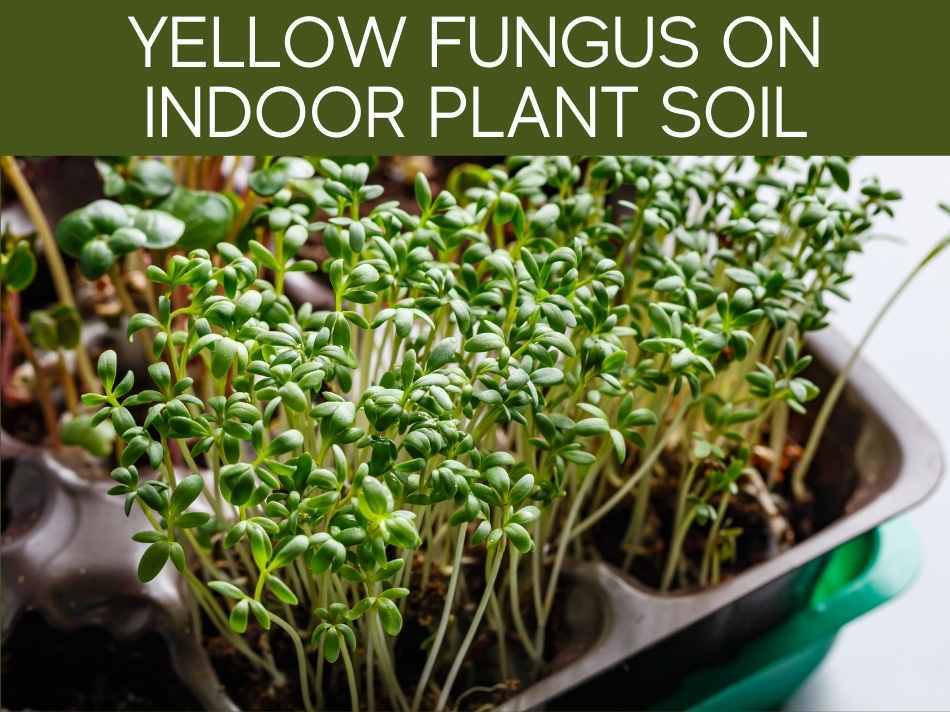
Yellow fungus growing on the surface of indoor plant soil is a common problem that most gardeners ask about.
The fungus typically appears in warm, humid conditions.
In outdoor gardens, the yellow fungus is most often encountered in summers.
On the other hand, for indoor potted plants, it can appear at any time of the year since the indoor environment and temperatures are favorable for it.
So what is this yellow fungus, and how harmful is it for the plants?
Leucocoprinus birnbaumii is a mushroom fungus that appears on the soil of potted plants.
The fungus is common in store-bought potting soils and grows to about 1 to 3 inches tall with 1 to 2 inches wide caps.
Though they are not harmful to the plants, the mushrooms are poisonous to humans and animals.
As a matter of fact, the fungus breaks down the organic matter in the soil, making nutrients available for indoor plants.
However, if you have children or pets in the house that may accidentally ingest mushrooms, it’s a better option to snip off the mushrooms as they appear on the soil.
Fungicides are generally not very effective against mushrooms.
Should you harvest and consume the herbs from your indoor herb garden if the yellow fungus is growing on the soil?
Since the mushrooms don’t release toxins into the plants, it’s generally safe to consume herbs from the pot once you’ve carefully washed it and made sure there’s no fungus on it.
However, if you’re still nervous, you can keep removing the mushrooms as they appear around the plants.
How To Dry Indoor Plant Soil?
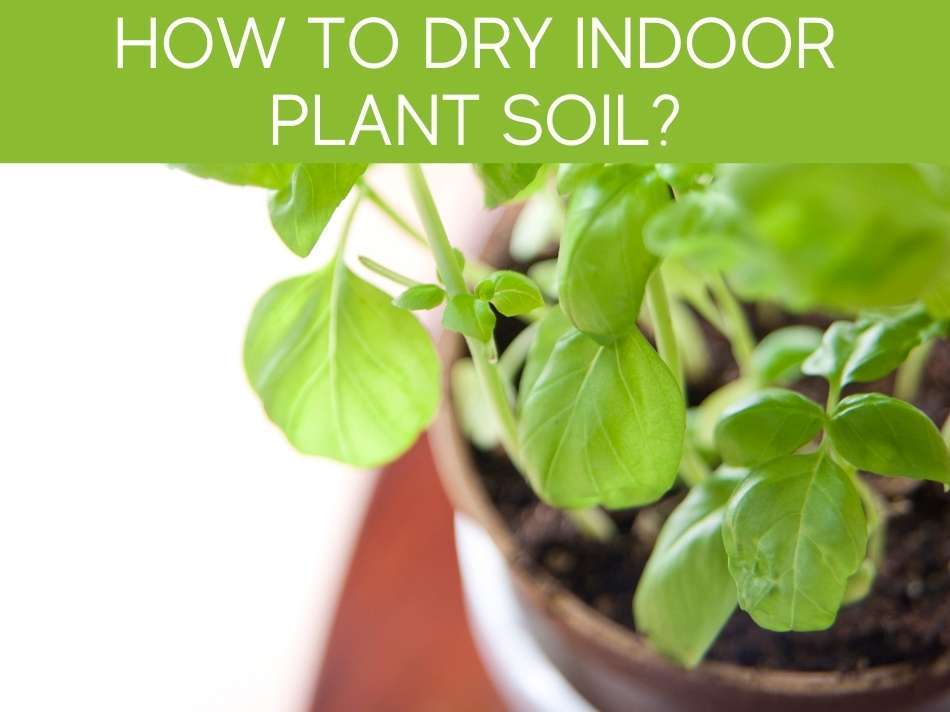
Overwatering is one of the most common culprits behind a dead houseplant.
However, if you’ve overwatered your indoor plant, there’s no need to worry.
There are plenty of ways to dry indoor plant soil and make it more hospitable to your houseplants.
If you notice dropping, yellowing or wilting leaves, the plant is telling you that it has had too much water.
Here are some tips for drying overly wet soil:
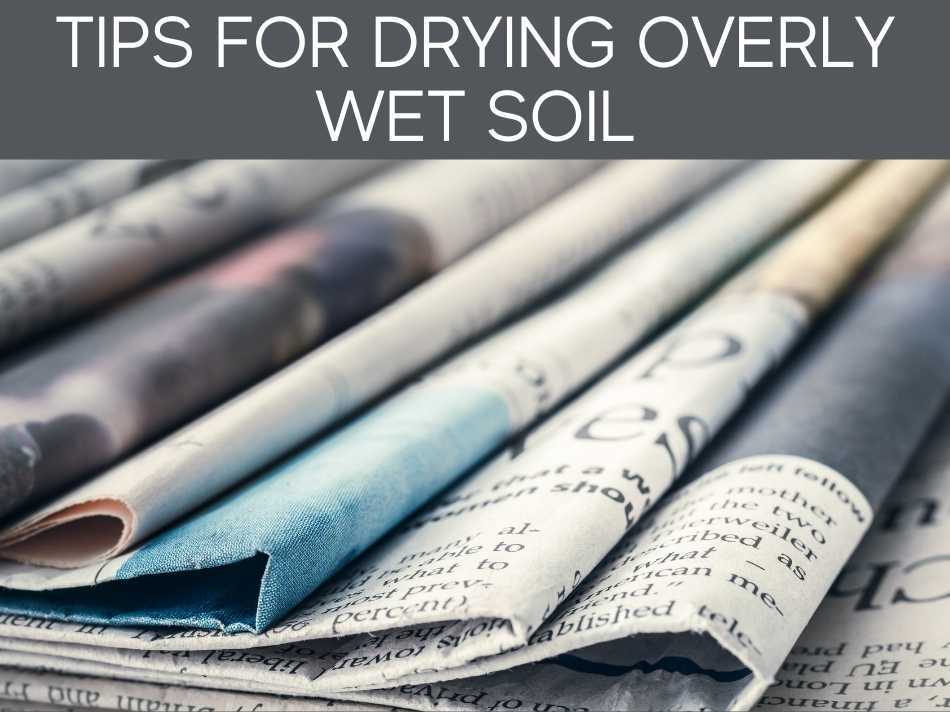
- Empty any excess water that is sitting in the saucer below the plant pot.
- Increase the light reaching the plant so the plant can utilize water faster for photosynthesis.
- If the soil is too wet, gently slide out the plant from the pot and place it over multiple layers of newspaper.
Let the newspaper absorb water, changing the newspaper layers a few times until it has absorbed much of the water.
Other than the tips to dry overwatered soil, be careful never to fertilize a plant that’s showing symptoms of overwatering.
Let the plant recover from the problem before resuming the usual watering and fertilizing routine.
Best Bug Free Indoor Potting Soil
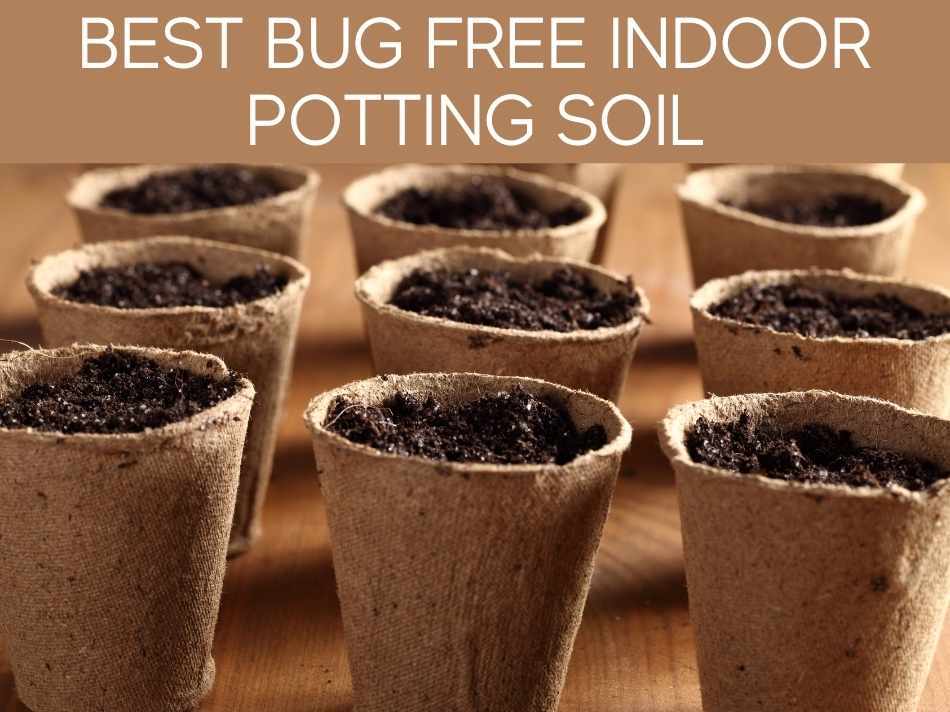
The best indoor potting soil should be bug-free.
You wouldn’t want pests and insects bothering your indoor plants or even finding their way inside your house.
To keep your home and indoor garden pest-free, make sure you always purchase bug-free potting soil.
Always use new, sterile potting soil for planting houseplants to keep your potted indoor garden bug-free.
Typically, commercial potting mixes are ‘soilless’ medium, so pests are not attracted to the plants.
Clean and sterilize the pots and gardening tools with a bleach solution or vinegar before planting to prevent bringing pests into your new plants.
Other than using sterile, soilless mixes to grow plants, good gardening practices are also important for keeping your indoor garden bug-free.
Always water at the base of the plant and avoid drenching the leaves.
Make sure the soil isn’t too dry or too wet, and the plants have sufficient light to support healthy development.
If you’re considering Miracle-Gro garden soil, check out the full article on using Miracle-Gro garden soil in pots.
Conclusion
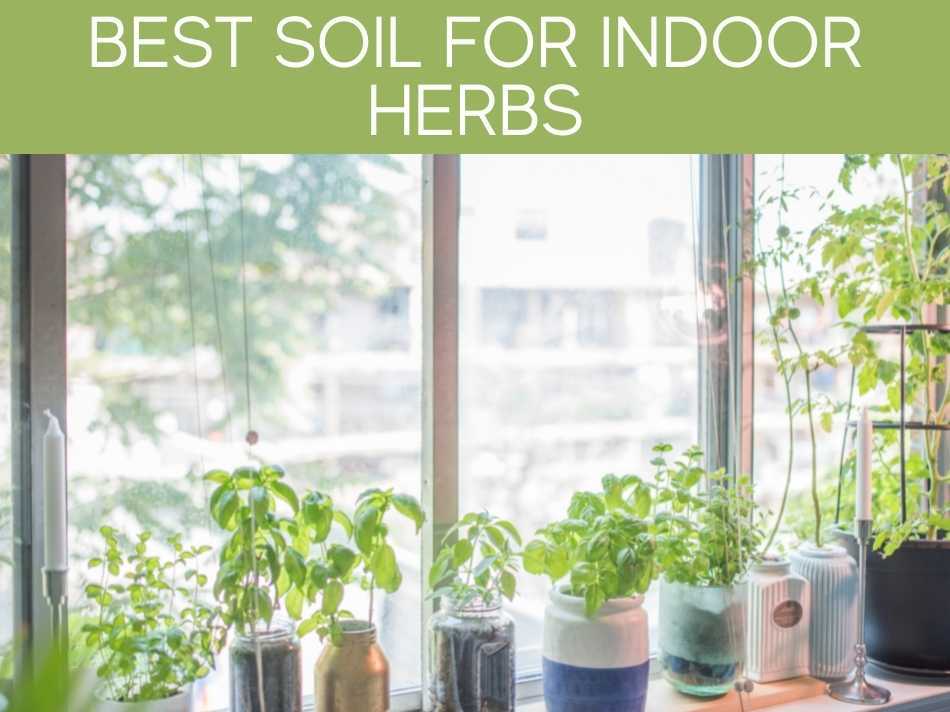
Now that you know all about the best soil for indoor herbs, it’s time to start planting an indoor edible garden!
Fill some pots with the perfect growing medium, plant herb seeds, place them on your kitchen window, water them regularly and watch it turn into a beautiful herb garden that spreads a subtle earthy fragrance into the atmosphere.
